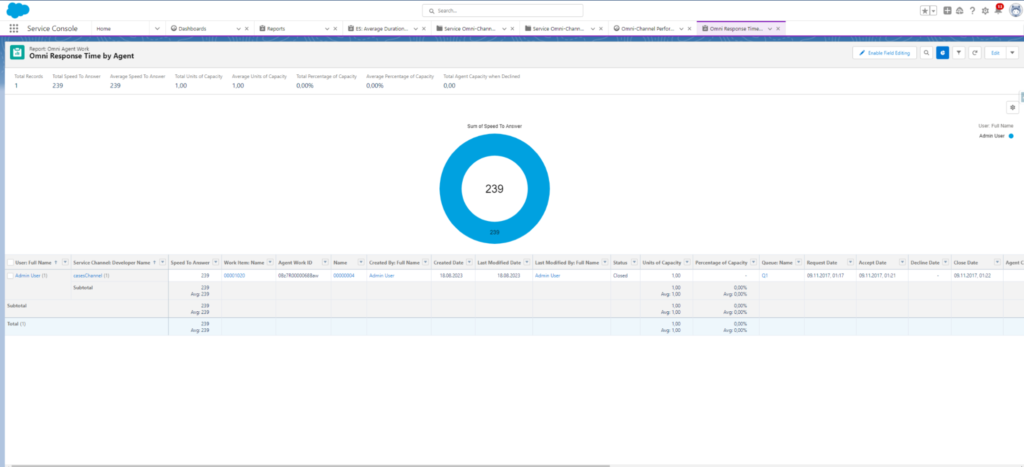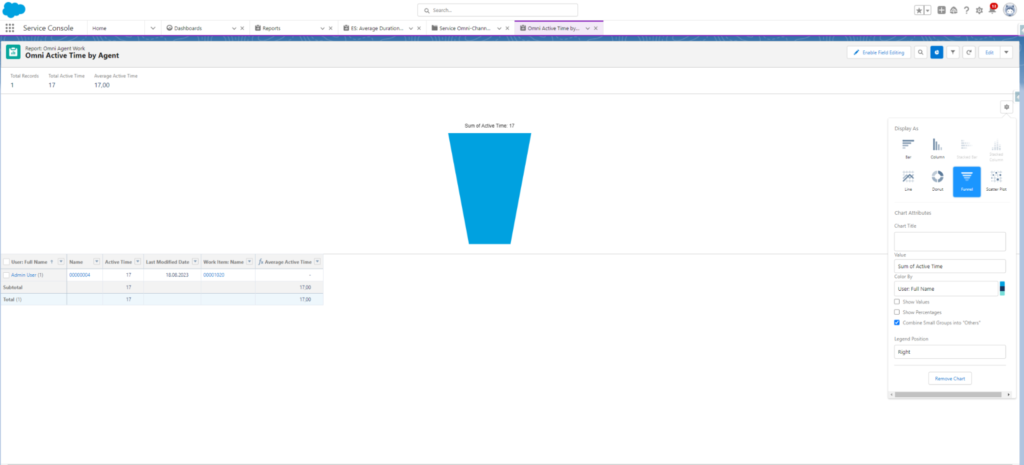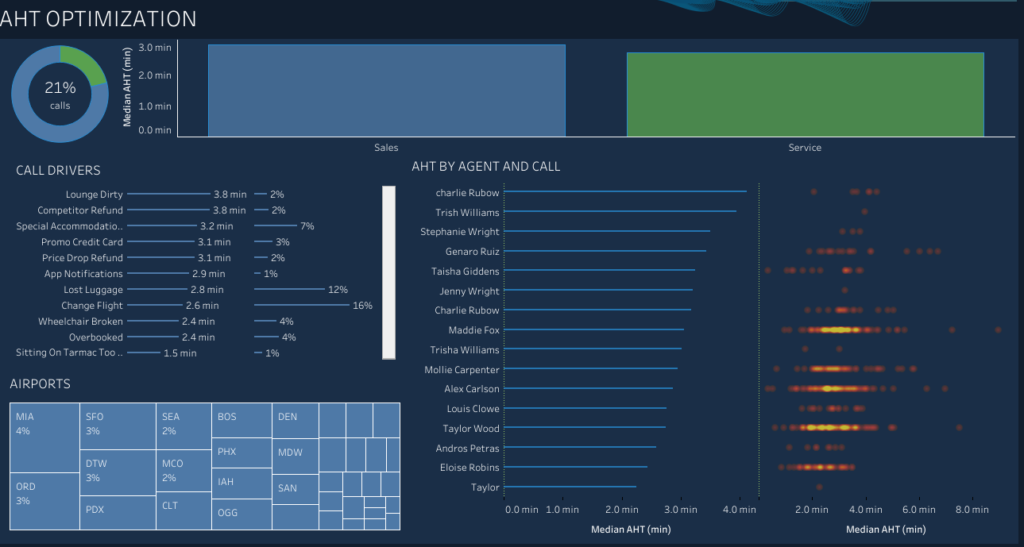Managing customer communications across various channels, including telephone, email, chat, or social media, is a pivotal aspect of call center operations. Call center software is specifically engineered to aid sales agents and their supervising teams in managing these communications while also tracking essential performance metrics. This ultimately aids in the improvement of workforce management and customer outcomes.
Key Performance Indicators (KPIs) are fundamental in assessing both the team and individual agent performances. Hence, the selection of meaningful metrics is crucial. The objective here is to highlight crucial call center KPIs and clarify the steps involved in setting up a call center KPI dashboard in Salesforce.

Essential Call Center KPIs
First Call Resolution (FCR): A vital KPI that signifies resolving a customer’s concern during the initial call. Attaining a high FCR not only conserves time but also establishes a positive and enduring impression on the customer. This KPI can be determined by using the total count of received calls and the count of queries resolved on the initial call.
Wait Time: This relates to the length of time a customer has to wait before an agent answers their call. It is imperative to minimize this KPI to guarantee customer contentment.
Time Spent on a Call: This KPI identifies the average duration an agent spends on a call. A reduced average time indicates that more customer queries can be addressed, whereas a higher average implies the agent requires additional coaching to resolve issues effectively.
Top-Performing Agents: Acknowledging and appreciating top-performing agents is crucial for sustaining high morale and motivating employees. KPIs like average daily calls and the percentage of solutions delivered on the initial call can assist in identifying these high performers.
Number of Calls vs. Calls Answered vs. Calls Missed: This comparison is critical for evaluating agent utilization. A high count of missed calls necessitates investigation and correction as it may cause customers to switch to a rival.
Occupancy Rate: This refers to the total duration an agent is engaged on a call compared to the total time they are logged in. It is crucial for assessing the work rate of the agents and is essential for delivering optimal service to customers.
Customer Satisfaction: Assessing customer satisfaction post-calls using a survey can offer valuable insights into an agent’s performance and the probability of retaining customers.
Peak Time: Supervising incoming traffic is essential for planning staffing requirements and managing peak times efficiently.

Call Center Dashboard Metrics
Call center dashboards generally track two broad categories: agent performance and call center performance. These dashboards allow executives and managers to assess relevant performance at a glance and commonly track the following metrics:
Call Center Statistics
Call Center Performance
Agent Performance Indicators
Average Wait Time Trends
Average Talk Time Trends
Configuring a Salesforce Call Center KPI Dashboard
Comprehending KPIs: The initial step in setting up a call center KPI dashboard involves a comprehensive understanding of the KPIs that are most pertinent to your business. Common live agent KPI reports in Salesforce comprise Average Handling Time, First Call Resolution, Customer Satisfaction, and Call Abandonment Rate.
Accessing Salesforce Reports: Salesforce incorporates a feature that enables users to generate reports. To utilize this, navigate to the ‘Reports’ tab in Salesforce and click ‘New Report’. Choose ‘Call Center’ as the report category.
Crafting a Dashboard: Post the report creation, the subsequent step is to formulate a dashboard to visualize the data. Navigate to the ‘Dashboards’ tab and click ‘New Dashboard’. Incorporate the required components into your dashboard and select the previously created report as the data source.
Tailoring the Dashboard: Modify the dashboard by incorporating charts, tables, and metrics that correlate to your KPIs. For instance, you can include a gauge chart for Average Handling Time and a pie chart for Call Distribution by Agent.

Apps From AppExchange
Tableau

Tableau provides a simple, intuitive interface that allows users to effortlessly extract valuable insights from their data. Its minimalist design and smooth navigation make it accessible to users of all skill levels. With a variety of visualization options, including charts, diagrams, maps, scatter plots, and treemaps, Tableau caters to various needs, from presenting statistics to stakeholders to developing engaging infographics.
Additionally, Tableau’s dynamic features facilitate real-time exploration of data, enabling users to interact with specific figures, eliminate superfluous information, and modify visualizations as needed. This encourages a collaborative and investigative approach to data analysis. Moreover, Tableau’s ability to integrate with real-time data sources ensures that visualizations stay current, providing access to the most up-to-date insights at all times.



Omni-Channel Performance Dashboard

Omni-Channel Performance Dashboard is an invaluable tool for call center managers looking to optimize agent performance and provide targeted coaching. By accessing data from various sources and providing a comprehensive set of pre-built reports, the dashboard saves time and effort while delivering actionable insights to improve call center operations.
Insight:
Requires Service Cloud

Insight:
Significance of Real-time Data: Possessing real-time data is vital for making knowledgeable decisions swiftly. With real-time data, issues can be tackled as they emerge, rather than after they have intensified.
Personalization is Essential: Tailor your dashboard to mirror the KPIs most pertinent to your business. Each call center may possess distinct operational necessities, hence it is crucial to select the KPIs most relevant to your operations.
Leverage Plugins: Apps can augment your dashboard with extra features. Add these applications to optimize your dashboard’s potential.
Conclusion
Configuring a call center KPI dashboard in Salesforce involves understanding relevant KPIs, creating reports, and customizing the dashboard. Utilizing plugins like Tableau and Omni-channel Performance Dashboard can enhance your dashboard with real-time updates and advanced visualization options. Ultimately, a well-configured KPI dashboard is essential for monitoring and optimizing call center performance.
The post Optimizing Call Center Performance With Salesforce first appeared on Salesforce Apps.
